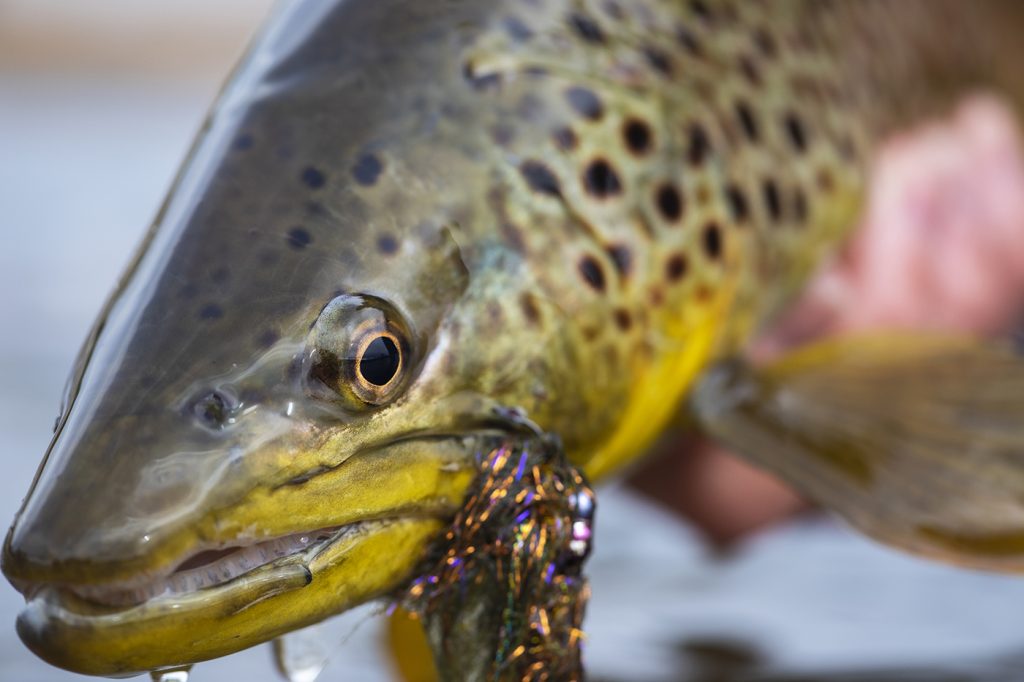
Photo: Matt Gymon / Freestone River Photography.
I’m sure there’s some truth behind that – to an extent, because it’s certainly far from impossible to catch big fish on small flies. However, this is about big flies and there can be little doubt that big, predatory fish mainly feed to bigger prey, mostly smaller fish. A dense hatch of bugs will bring any trout up, but a bif fly will tempt them consistently, all year round.
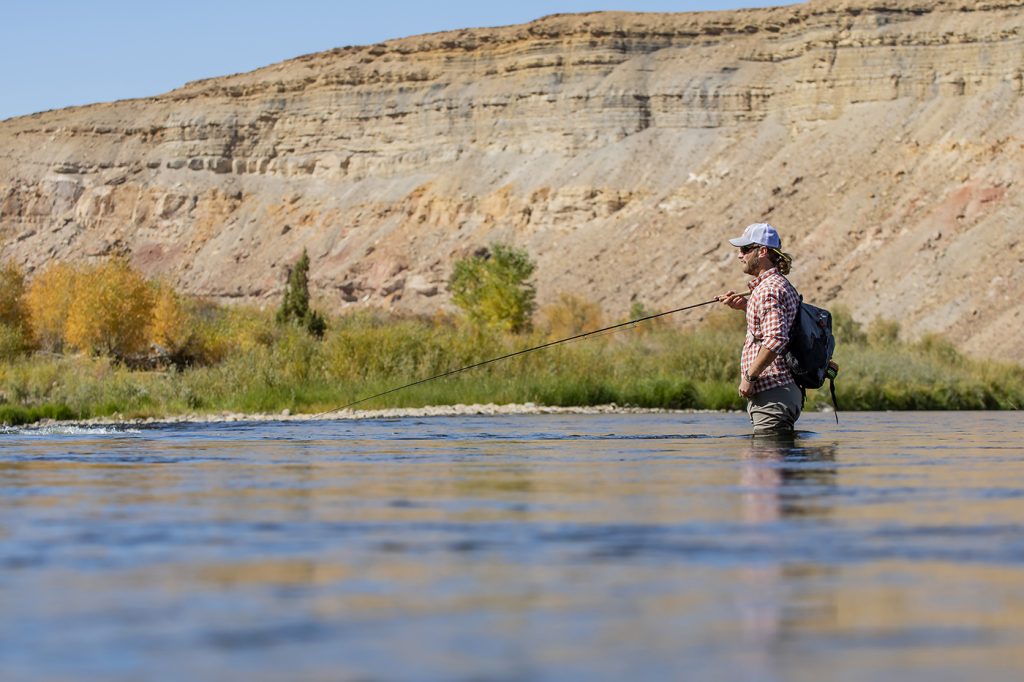
Big streamer dude par excellence – swedish Andreas Andersen chasing big trouts on big streamers in Gunnison River.
Big flies can be many things and what’s big in one fly fisher’s optics might not be big in another one’s. When it comes to trout fishing, a size 2 Wooly Bugger is big in my optics, very big, in fact. In the eyes of Andreas Andersson, a size 2 Wooly Bugger isn’t big – at all. If some you have haven’t seen Andreas’ flies, check out some of his videos. Among several others, I really like the Mini Sid:
The modern spawn of big trout streamers was probably initiated by the legend Kelly Galloup who’s famous for a number of big trout streamers, like his Sex Dungeon and Zoo Cougar. One thing is the modern trends, but big flies for big fish is far from new. Just think of the salmon flies of the late 1800s – size 4/0, 6/0 – even 8/0 hooks. Giant flies.
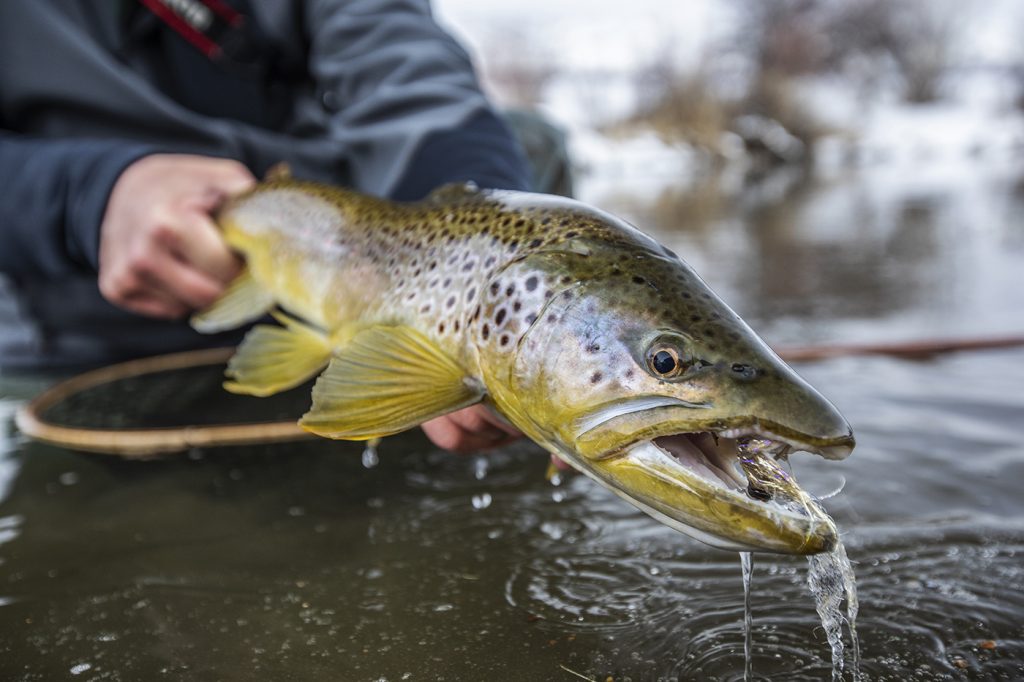
Photo: Matt Gymon / Freestone River Photography.
But big flies for trout has a long history as well. Many will know the big, long feather winged streamers that originated in New England. The famous Carrie Stevens is the fly tier most readily associated with the style of streamer that also goes by the name, Rangeley Streamer – referring to Rangeley Lakes region in Maine. It’s an interesting style of fly, which is easily defined by the feathers wings and the very, very long steamer hooks that are tied on. Often they sport sides of duck feathers, bellies of buck tail and sometimes jungle cock cheeks. Our good friend, Steve Silverio, is an expert on the style and history of these flies and at some point, I’m sure I can persuade him to write a piece, properly outlining the history. What many don’t know is that they were originally designed for trolling behind a boat.
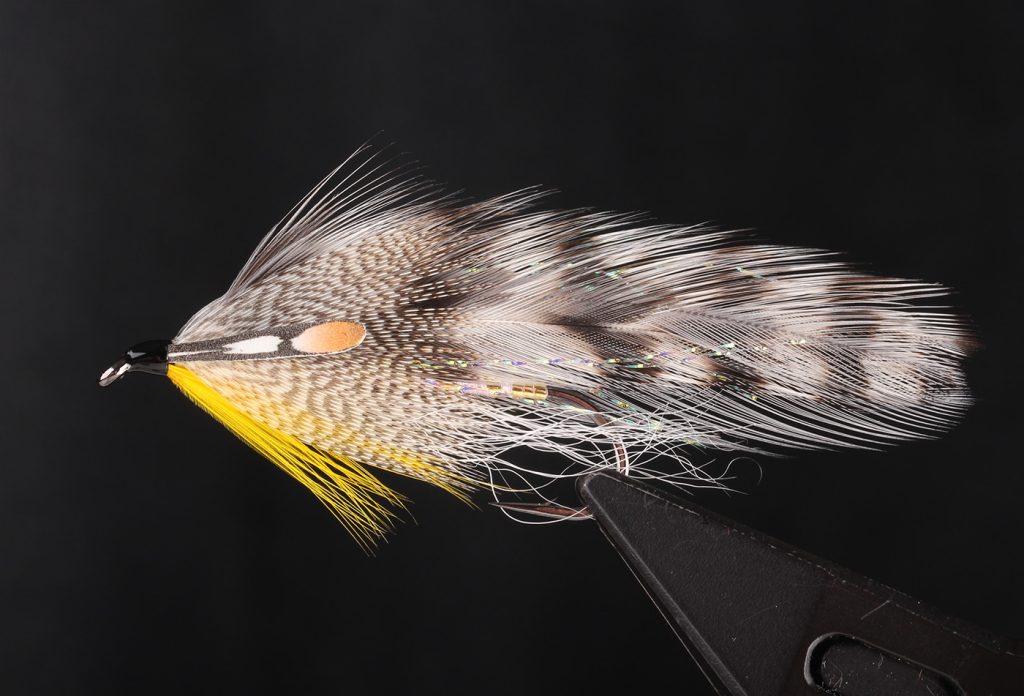
Take a look at this step-by-step by Håkan Karsnäser, where he ties the Little Mermaid, which Sharon Wright has become well known for tying. It’s a little simpler than many of the classics, but it represents the style well. Håkan tied this one on an Ahrex NS 118, our classic streamer hook. The NS 118 is “only” 4X long, but that makes it more “fishable” on a fly rod.
Little Mermaid:
Hook: Ahrex NS 118.
Rib: Flat gold tinsel.
Body: White silk floss.
Belly: White buck tail.
Underwing: A little Krystal Flash.
Wing: Two grizzle feathers.
Sides: Teal.
Throat hackle: Yellow cock hackle fibres.
Cheeks: Pro Sportfisher Jungle Cock Gen 3.
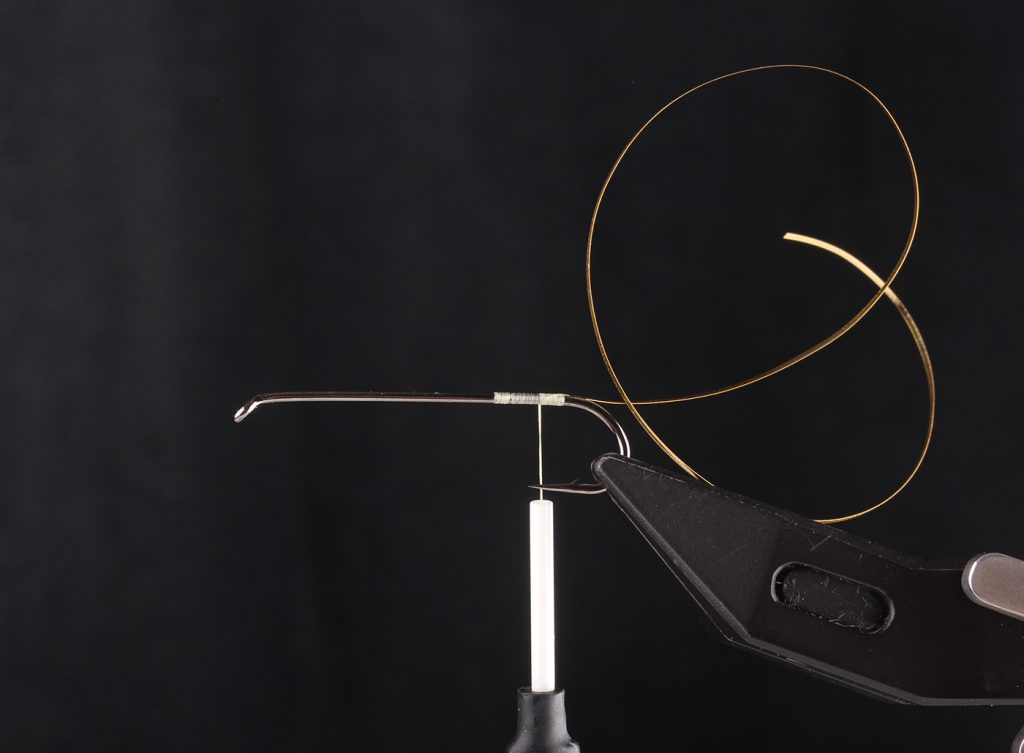
Place the hook in the vice and attach the thread at the back. Secure a piece of flat, gold tinsel just before the bend of the hook.
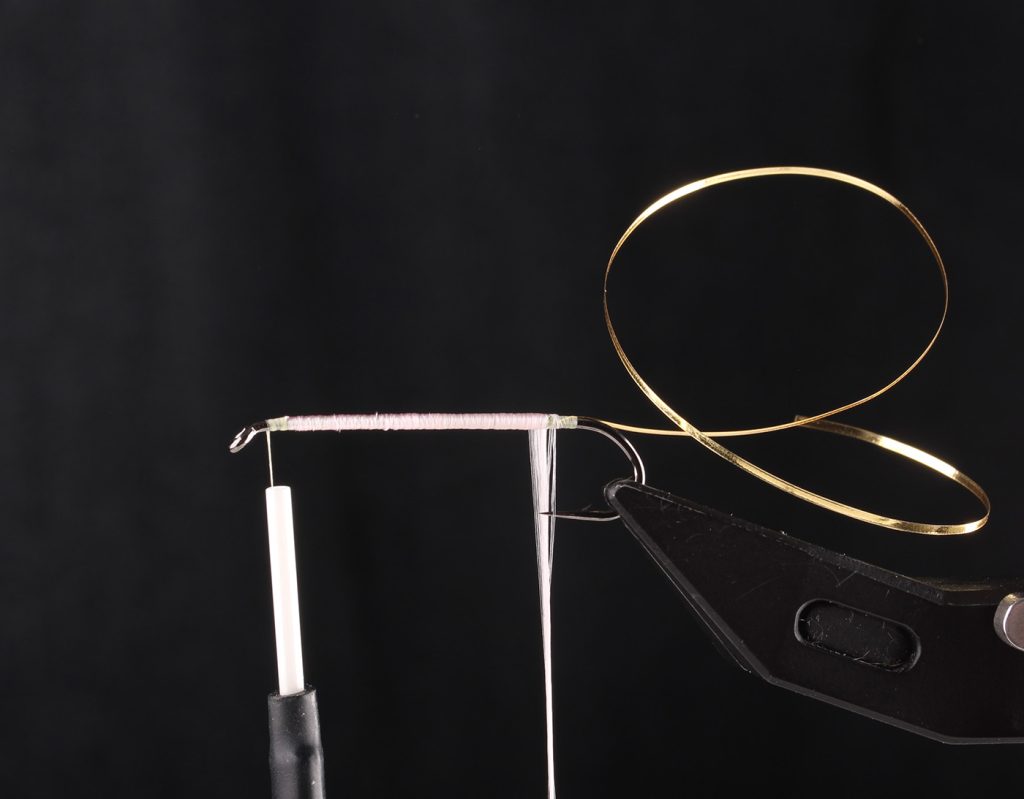
Bring the thread to the front and tie down a long piece of white silk floss. Create an even underbody by bringing the silk down to the tie in point of the tinsel and back to the eye. Leave ample space behind the eye for the fooling steps.
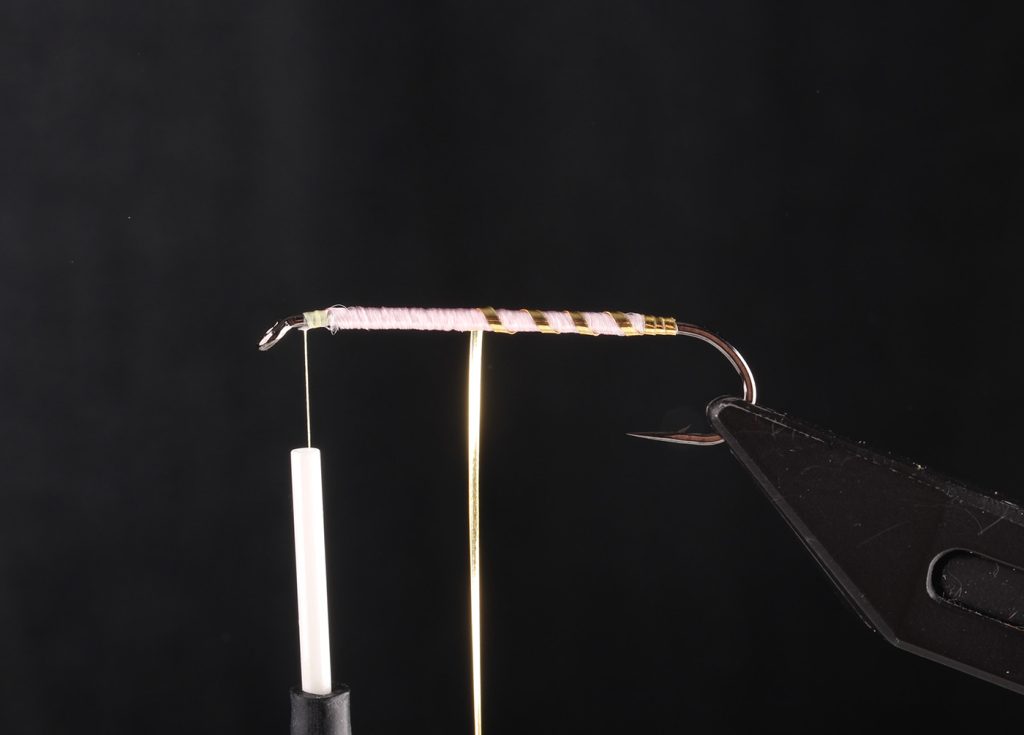
Rib the body rib the flat tinsel in fairly tight and even turns.
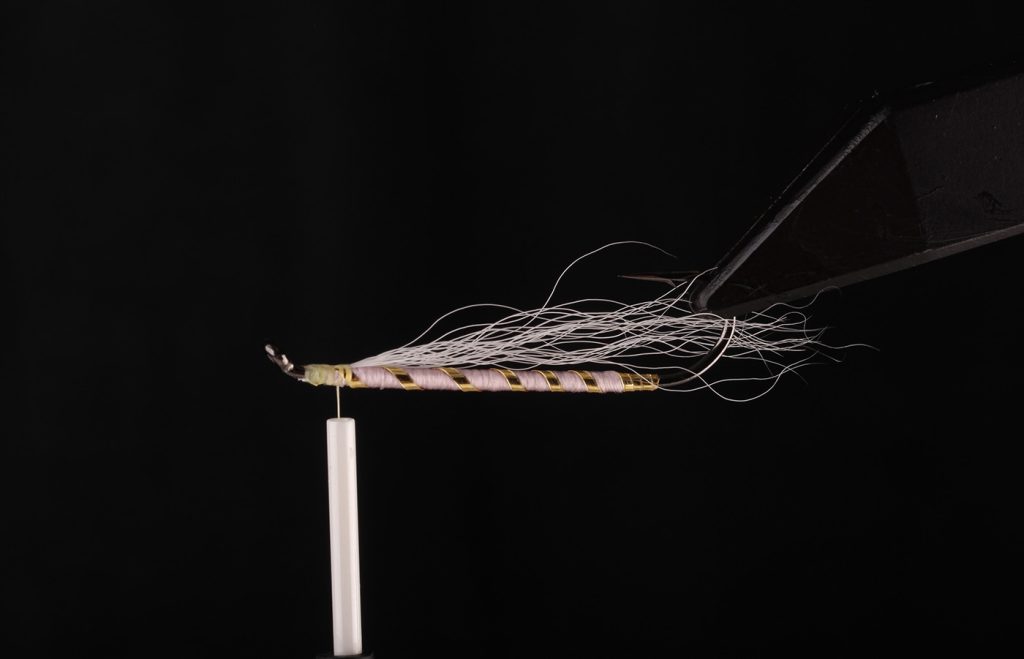
Tie in the white buck tail below the hook shank, just slightly longer than the hook.

Tie in a few strands of Krystal Flash.
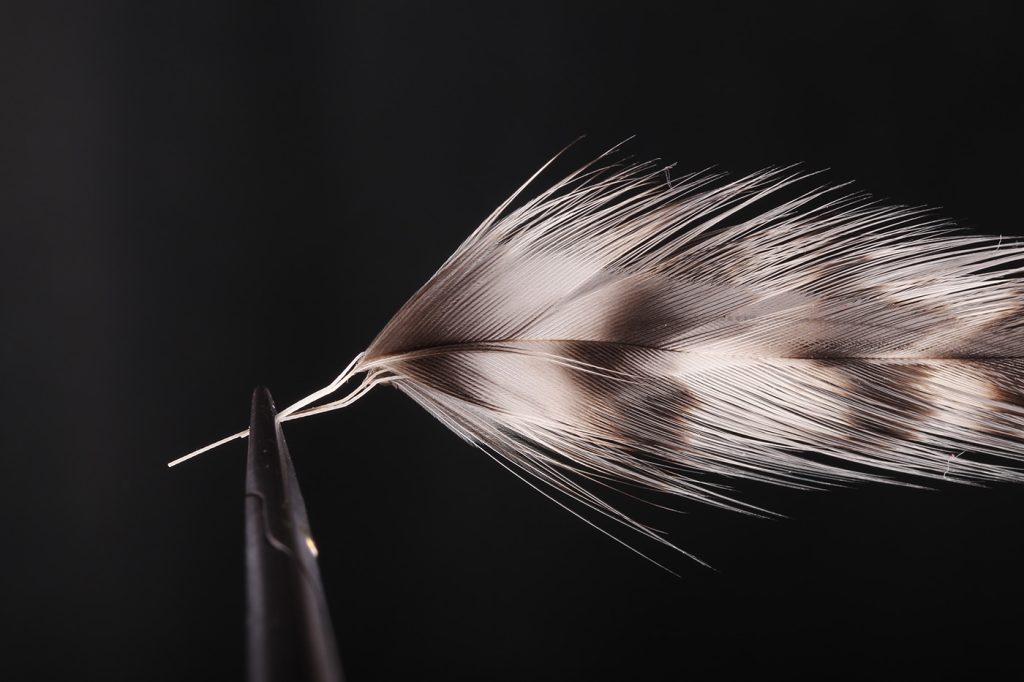
Prepare two grizzle feathers, The final length should be about double the hook. Strip the fluff off and give the hackle stems a little bend, as shown. This will ensure that they lay flat over the body.

Tie down the grizzle hackles, back to back over the hook shank.
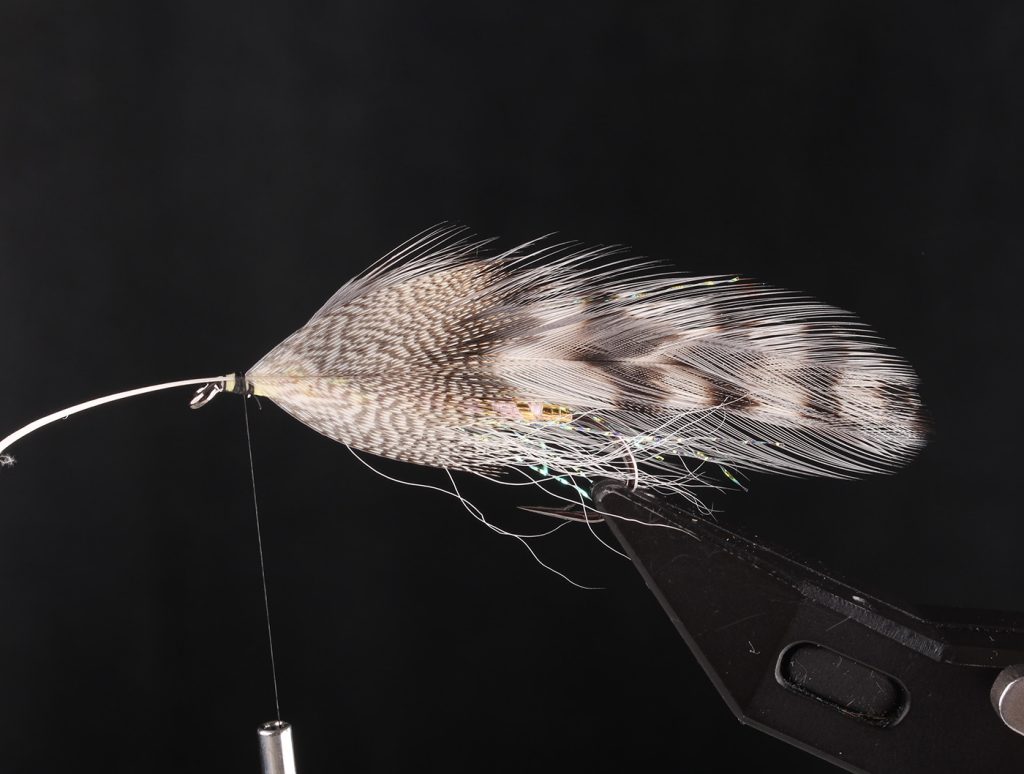
Tie in teal feathers on each side of the fly. They should be about half the length of the hook and not too wide.
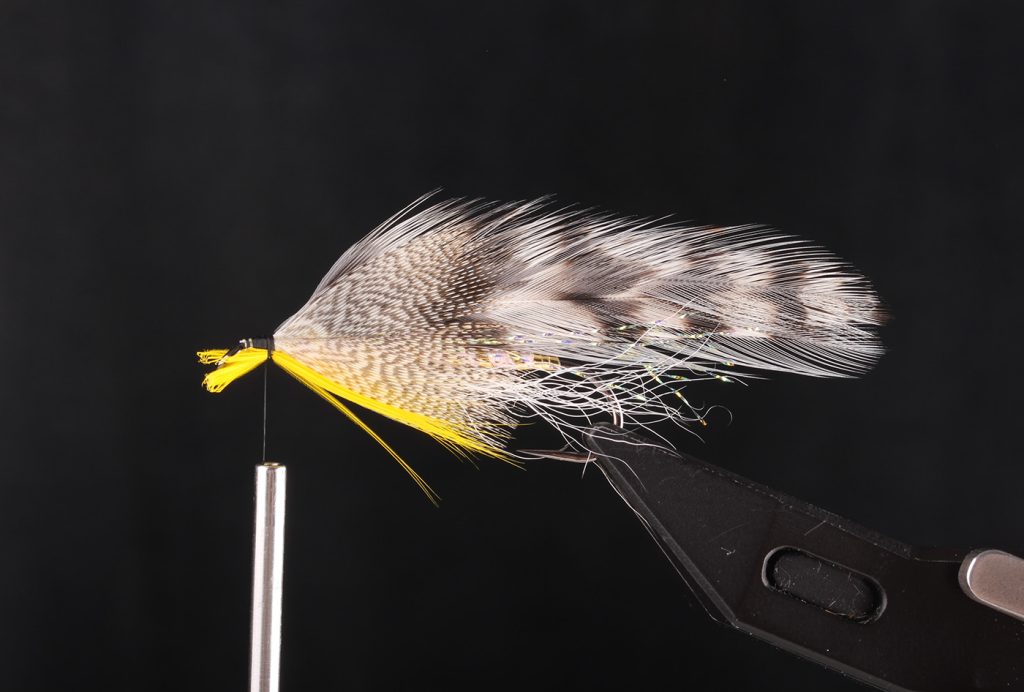
Tie a good bunch of yellow cock hackle fibres belos the eye.
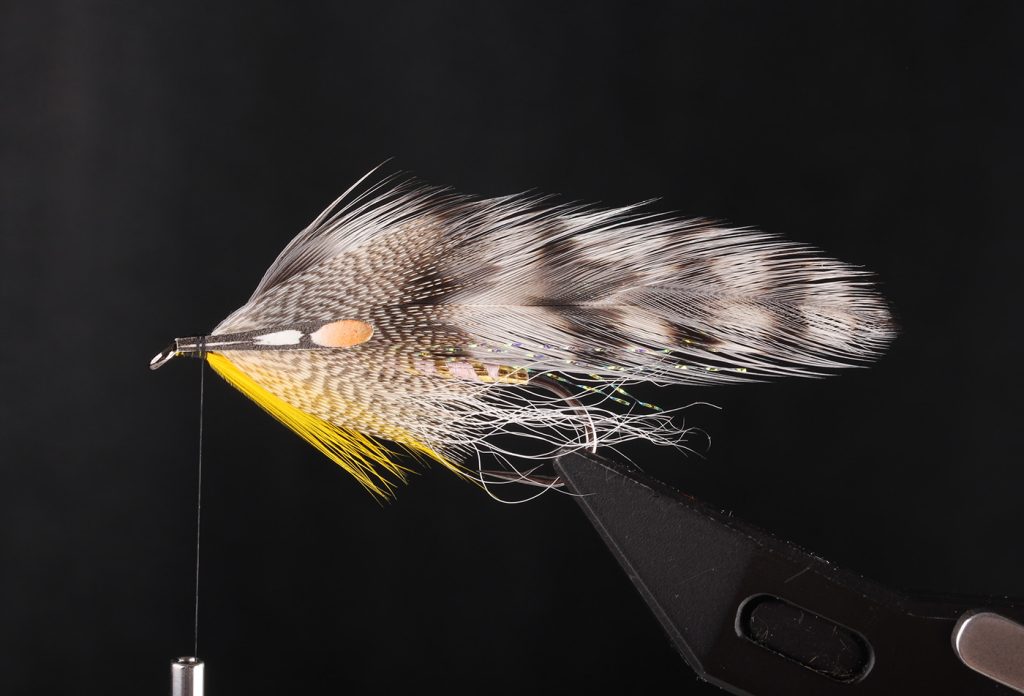
Add Pro Sportfisher Gen 3 Jungle Cock over the teal feathers.
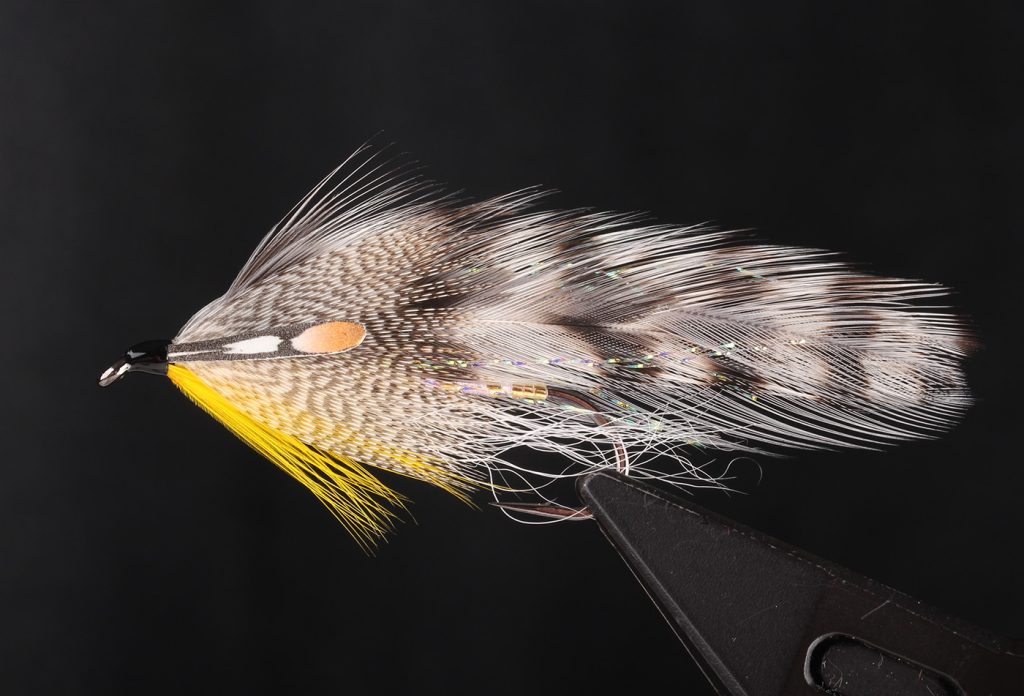
Form a slightly long head, varnish and the fly is done.
